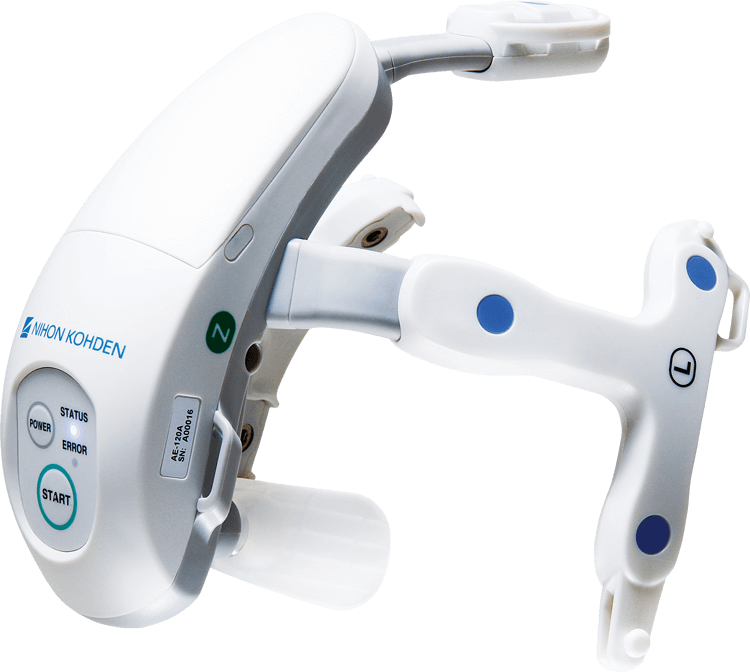

Neuromonitoring (ICU)
Are you looking for information about a specific product? Please be aware that this website is still being translated, and some content may appear in its original language. We are working to complete the translations and appreciate your understanding.
Neuromonitoring in ICU
Cardiac and respiratory monitoring are standard practices in the intensive care unit (ICU) environment today, however, electroencephalography (EEG) which plays a crucial role in determining the current status of the patient is not. Despite challenges associated with continuous EEG monitoring (cEEG) in ICU, during this crucial phase of patient care, Nihon Kohden offers multiple solutions for cEEG measurement.
Our innovative wireless EEG headset (CerebAir) enables the streamlined preparation and measurement enable faster EEG acquisition and long-term monitoring. Clinicians are better supported with seizure detection algorithms enabled in the EEG trend software with the wired 38-channel junction box, allowing for the quick identification of seizure activity resulting in quicker clinical intervention for the patient. Simplified EEG monitoring is available with modules on Nihon Kohden Patient Monitors, allowing for the EEG data to be displayed on the central nursing station.
As a result, continuous EEG monitoring in ICU can be become a standard parameter for comprehensive patient care in this critical care setting.

Simplified Wireless EEG Monitoring
Developed to provide a new standard of continuous EEG (cEEG) care for unconscious patients in the ER and ICU, the CerebAir is a low channel-count, wireless EEG headset that can be rapidly deployed by any ER or ICU nurse/ clinician and remotely monitored by an EEG technologist or physician.
CerebAir provides crucial data that allows the ICU physician to properly assess and determine the best course of treatment for critical patients while utilizing limited resources in the most effective way possible.
Rapid
- Unique design allows for setup and acquisition within 5 minutes
- Fixed electrode positions provide efficient placement
- Flexible design allows for quick and easy application for any size adult patient head

Critical
- Remote access provides physicians the ability to assess patients quickly from a remote location
- Provides appropriate data that can be used to monitor and assess the need for escalated intervention
- Assists clinicians in making quick, informed decisions on the most appropriate course of care for critical patients

Essential
- Bluetooth communication eliminates the need for additional cables, saving space in an already crowded environment
- Unique electrode design provides high-quality recording required for critical patients
- Streamlined data display provides physicians with specific details for intervention of neurologically compromised patients

Long Term Quality
All-in-one solution: One junction box for continuous EEG (cEEG) provides 32-channel EEG inputs. The JE-921A provides the highest signal quality and maximum reliability.
The QI-123A input box converter connects JE-921A to the EEG over a LAN network. This provides LAN connectivity and expandability for an EEG system.
Clarity
- Adult and Neonatal Seizure Detection software assist physicians and nurses by identifying suspected seizures
- Allowing for the most appropriate course of care for these critical patients

Overview
- Appropriate clinical trend data is made available with the use of EEG Trend software, that can be used to monitor and assess the need for escalated intervention
- With the addition of the Vital Signs Interface appropriate vital signs data can be displayed on the EEG Trend screen streamlining the clinical information displayed to physicians allowing for focussed interventions on neurologically compromised patients

Support
- Remote monitoring by an EEG technologist or physician with Live View Panel ensures high level specialist support to the ICU physician
- Ensures high level specialist support to the ICU physician





